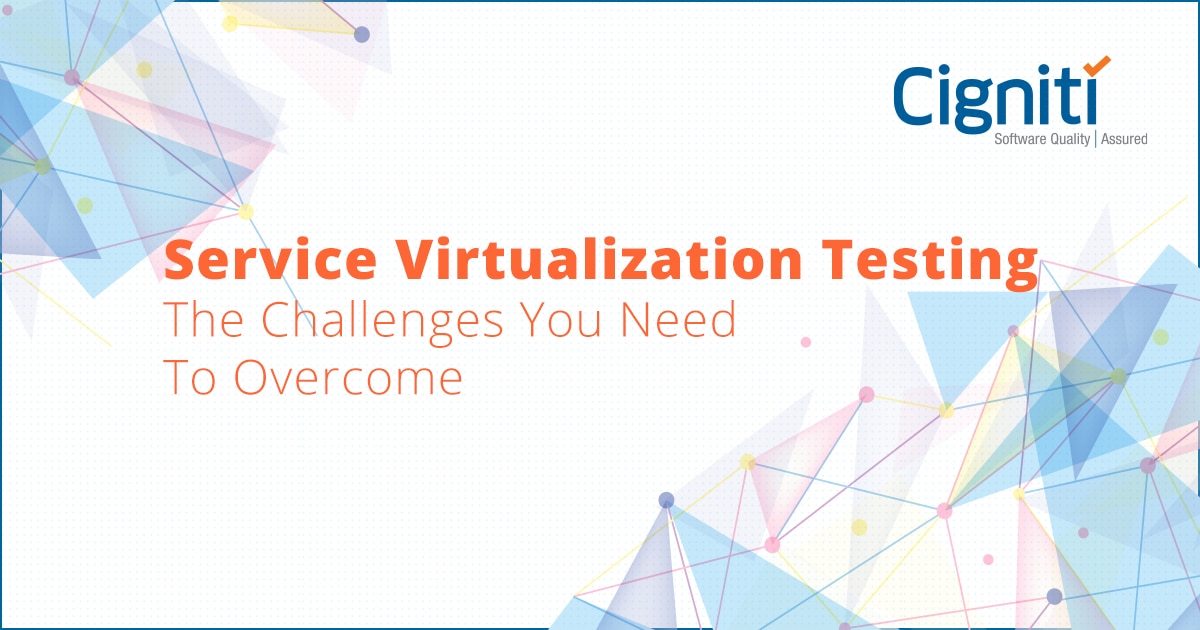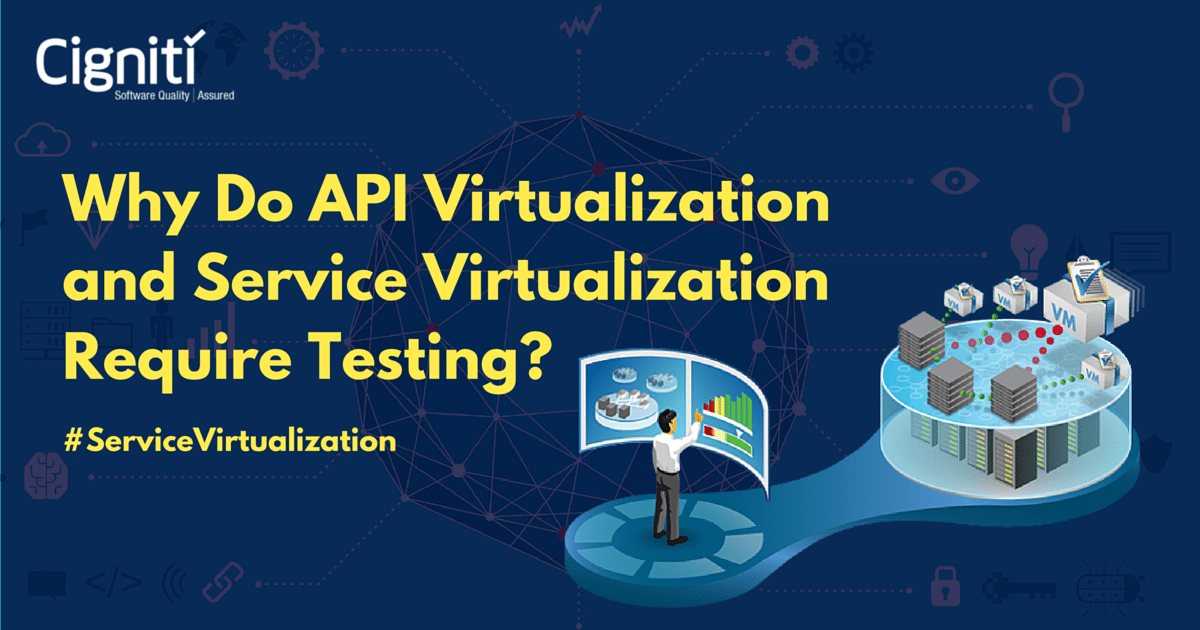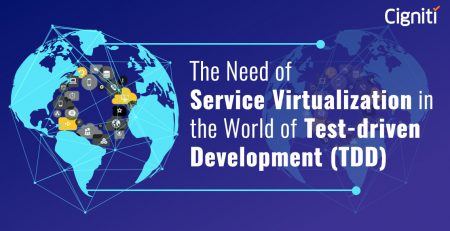Service Virtualization: How it helps Accelerate Testing Cycles?
What do you do if the purpose of a cyber-attack is to create disruption? Post the recent Ransomeware cyber-attacks, security researchers are anticipating whether a virus is being designed and released just to create disruption. The overall premise of testing and developing applications changes in a backdrop that implies disruption. Service Virtualization can come in handy to determine the detrimental impact of a virus on an application with its fundamental factors.
Virtualization has matured as a technology over the years, with many advanced best practices. The practice has been endorsed by teams to emulate behaviour of particular components in varied component-based applications – API-driven, Cloud-based, service-oriented architectures, etc. Teams leverage the virtualized dependent components to check the behaviour of the application under test (AUT). Practically, it is miles different from mocking a particular environment.
Security, Performance, Resilience, are some prerequisites of a robust and market-ready application. Enterprises need to pace up to the market, but not at the cost of losing out on the quality. Let’s look at some best practices of Service Virtualization that can be recommended to ensure a faster but quality-empowered testing cycle.
- Answer every Question before you dive in
Virtualization is considered a solution for almost every problem in the testing and development sphere today: whether a system has to be built, tested, various components need to be sourced, a production environment emulated, or a specific workload needs to be generated for testing the application. Teams have been virtualizing components and applications for deriving various results.
However, it is important to define some tangible benefits from Service Virtualization efforts for your concerned project. Answer some basic questions such as – how much disk space is available? How much is the storage requirement? How much of data back-up is required? What is the real benefit of virtualizing your application? Is there any recovery plan in case of failure?
A rational approach would be that a thought-through Virtualization strategy is built after all these questions are mutually answered.
- Ensure Management and Security of Virtualized Systems
Cyber-attacks are storming the digital world, where a new bug is introduced almost every second day. In such a scenario, it is impossible to escape the fact that your virtual systems are at stake. Unfortunately, security of many virtual systems is ignored, and there is a very high probability of applications getting attacked.
So, the best idea is to constrain an unruly spread of virtual machines, and cautiously incorporate all virtual machines within the security policy.
- Consider constant back-up mechanism
Virtual systems should be treated like physical systems, where even the threats could be similar. A robust back-up system is critical as it enables rapid recovery, helps manage any data loss, and doesn’t impact the speed of the project. Hence, a strategic back-up regime is important.
Similar to physical systems that need a back-up, in a Service Virtualization method, even the virtual components, applications, and critical data needs a good back-up system to avoid it from crumbling during mission critical milestones of the project.
- Get your storage centralized
One of the greatest reasons for virtualization is to enable anytime, anywhere access to test data, that enables faster resolutions of issues and speedy outcome. When the data is centralized, it enables teams to access ongoing test results on a regular basis and from anywhere. Moreover, the risks of data loss are minimized. If the systems are spread out, there could be virtual machine proliferation, and it could lead to data loss.
Centralization of systems and data enables to keep the confidentiality and makes everything accessible from a common place. This cuts down-time, helps accelerate the testing cycle, and also makes it safer for the teams.
- Regular system update
Virtual systems are leveraged by enterprises to not only save costs, but also to keep the process upgraded with latest software and tools. It is thus absolutely recommended to keep the virtual systems updated with the latest version updates and tools for the concerned project.
This also helps save time and ensures a robust testing strategy. The idea is to ensure quality, which is possible only when the systems are updated and ready for bug-bashing. Service Virtualization is particularly leveraged for more inclusive and collaborative testing approach, by ensuring tools and components that are upbeat.
Virtualization can be leveraged by all and might be the need for every enterprise, but is your strategy in place? Teams need to ensure that the Service Virtualization strategy resonates with the business objectives or the application development objectives. If it doesn’t, it might lead to chaos and dampen the objective of speeding up the testing cycle.
While virtualization promotes reuse of virtual services and collaboration, nevertheless, there is a need to maintain the virtual systems and not abandon them to get obsolete. In this way, the teams are in a position to leverage rich tools for and bring down the maintenance and development costs.
A well-crafted and implemented Service Virtualization strategy can enable enterprises to effectively automate continuous testing by leveraging virtual services for testing. Additionally, there is a whole plethora of systems and services that otherwise could be difficult to access for testing third-party APIs, and other complex or connected systems.
An effective Virtualization strategy enables teams to maximize productivity and support the idea of connected teams. The methodology has to further boost the DevOps and Agile development approach. It should help teams to collaborate across geographies and leverage resources collectively.
Moreover, today there is a need to deliver round-the-clock. While establishing a process, and implementing the best practices for Service Virtualization, teams should bring this fundamental factor into consideration. A robust strategy needs to ensure 24*7 testing capability with shared and scarce resources.
In Conclusion:
The core idea of Service Virtualization is to reinforce collaborative approach, share resources, enhance quality, ensure accessibility, and in this way, accelerate software testing cycles. A well-groomed strategy can build not only a comprehensive testing methodology, but also a long-term testing solution.
Being experts in Service Virtualization testing, we at Cigniti test your applications faster, and enable faster integration and release. Connect with us to leverage our extensive experience and build the best of Service Virtualization practices for your enterprise.





Leave a Reply